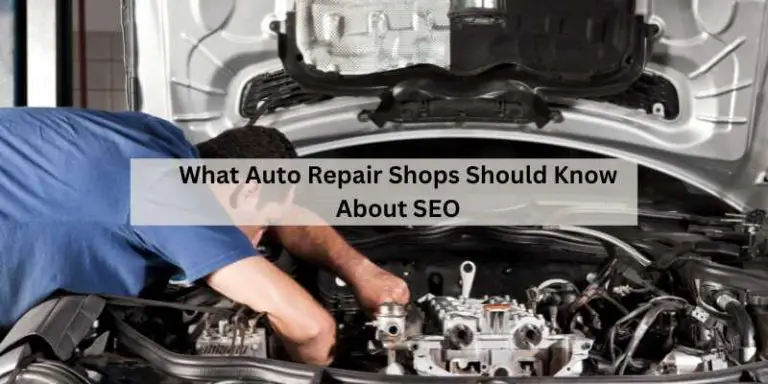What Happens When Your Car Gets a Service: Peak Performance!
When your car gets a service, it undergoes routine maintenance, such as oil and filter changes, fluid checks, and part replacements. This regular check-up helps ensure your car’s optimal performance and longevity.
A car service typically includes inspecting and repairing parts and systems as needed, as well as replacing filters and minor components. This proactive approach can prevent potential issues and keep your vehicle running smoothly. Regular servicing also helps maintain your car’s resale value and ensures safety on the road.
By adhering to manufacturer-recommended service intervals, you can enjoy a reliable and efficient driving experience.
The Essence Of Regular Car Servicing
During a car service, the engine oil, oil filter, and air filter are replaced, and the brake, coolant, and power steering fluid levels are checked. The onboard diagnostics are analyzed, and the spark plugs may be replaced, ensuring optimal performance and safety for your vehicle.
Maximizing Your Vehicle’s Lifespan
Regular car servicing plays a crucial role in maximizing the lifespan of your vehicle. By adhering to a routine maintenance schedule, you can ensure that your car remains in optimal condition for longer periods. During a car service, various maintenance tasks are performed, such as changing the engine oil, replacing the oil filter, and servicing the air filter. These tasks help keep the engine running smoothly and prevent wear and tear on vital components. By taking care of your car through regular servicing, you can extend its lifespan and enjoy its performance for years to come.
Ensuring Safety And Reliability On The Road
Another essential aspect of regular car servicing is ensuring safety and reliability on the road. During a service, professionals thoroughly inspect your vehicle for any potential issues or signs of wear. They check the levels of brake fluid, coolant fluid, and power steering fluid, ensuring that they are at the appropriate levels. Additionally, they analyze the onboard diagnostics to identify any underlying problems that may affect the performance of your car. By addressing these issues promptly, you can prevent breakdowns and maintain the safety and reliability of your vehicle, providing you with peace of mind while driving.
Regular car servicing is essential for maximizing your vehicle’s lifespan and ensuring safety and reliability on the road. By adhering to a routine maintenance schedule, you can prevent premature wear and tear on your car’s components, ultimately extending its lifespan. Moreover, regular servicing allows professionals to identify and address any potential issues before they escalate, reducing the risk of breakdowns and accidents on the road. By taking care of your car through regular servicing, you can enjoy a smoother, safer, and more reliable driving experience. So, don’t overlook the essence of regular car servicing and prioritize the maintenance of your vehicle to reap its long-term benefits.
The Anatomy Of A Car Service
During a car service, the mechanic conducts routine maintenance tasks like changing engine oil, replacing filters, and checking essential components to ensure optimal performance and safety of your vehicle. This thorough inspection helps prevent potential issues and keeps your car running smoothly.
Introduction: The Anatomy of a Car Service
Regular car servicing is an essential part of car ownership. It helps to ensure that your vehicle runs smoothly, safely, and efficiently. During a car service, a mechanic will carry out a range of checks and maintenance tasks to keep your car in top condition. In this section, we’ll take a closer look at the anatomy of a car service, focusing on two key areas: fluid checks and replacements, and filter renewal.
H3: Fluid Checks and Replacements
During a car service, a mechanic will typically check and replace a range of fluids to ensure that your car is running smoothly and safely. This includes engine oil, brake fluid, power steering fluid, coolant, and transmission fluid. These fluids are essential for the proper functioning of your car’s engine, brakes, and other systems. If any of these fluids are low or contaminated, it can lead to a range of problems, including reduced performance, increased wear and tear, and even engine failure. By regularly checking and replacing these fluids, a mechanic can help to prevent these issues and keep your car running smoothly.
H3: Filter Renewal and Its Importance
Another key aspect of a car service is filter renewal. This includes replacing the engine air filter, cabin air filter, and fuel filter. These filters help to keep your car’s engine and cabin clean and free of contaminants. Over time, these filters can become clogged with dirt, dust, and debris, reducing their effectiveness and potentially causing damage to your car’s engine or HVAC system. By regularly replacing these filters, a mechanic can help to ensure that your car is running at its best and protect against costly repairs down the road.
In conclusion, a car service is an essential part of car ownership that helps to keep your vehicle running smoothly and safely. By carrying out fluid checks and replacements, filter renewals, and other maintenance tasks, a mechanic can help to prevent issues and ensure that your car is in top condition. So, if you haven’t had your car serviced recently, it’s worth booking an appointment with a trusted mechanic to keep your car running at its best.
Under The Hood: Engine Care
When your car goes in for a service, one of the key areas of focus is the engine. Under the Hood: Engine Care involves several essential tasks that help ensure your car’s engine runs smoothly and efficiently. Let’s take a closer look at the fundamental engine maintenance procedures carried out during a service.
Oil Change Fundamentals
One crucial aspect of engine care during a car service is the oil change. The engine oil is drained and replaced with fresh, clean oil, ensuring proper lubrication and preventing friction-related damage to the engine components. This helps maintain the engine’s performance and longevity.
Spark Plug Inspection And Replacement
Another vital engine maintenance task is the inspection and replacement of spark plugs. These small yet critical components play a key role in the ignition process. During a service, the mechanic will inspect the condition of the spark plugs and replace them if necessary to ensure optimal engine performance.
Brakes, Tires, And Alignment
During a car service, the brakes, tires, and alignment are carefully inspected and maintained. This includes checking brake pads and rotors, tire pressure and tread depth, and ensuring the wheels are properly aligned for optimal handling and safety.
When it comes to getting your car serviced, there are a few key areas that mechanics will focus on to ensure that your vehicle is running smoothly and safely. These areas include the brakes, tires, and alignment. Let’s take a closer look at each of these areas and what you can expect during a service.
Brake System Evaluation
During a brake system evaluation, mechanics will inspect your vehicle’s brake pads, rotors, calipers, and brake lines to ensure that everything is functioning properly. They will check the thickness of the brake pads and the condition of the rotors to determine if they need to be replaced. They will also check for any leaks in the brake lines and assess the overall performance of your brakes. This is an important part of the service as it ensures that your vehicle will be able to stop effectively in the event of an emergency.
Tire Rotation And Pressure Checks
Tire rotation and pressure checks are another important part of a car service. Mechanics will inspect the tires for signs of wear and tear, check the tire pressure, and rotate the tires to ensure even wear. Properly inflated tires and even wear can improve fuel efficiency, handling, and overall safety while driving. It’s important to have this done regularly to extend the life of your tires and ensure that your vehicle is driving smoothly.
Alignment Check
During an alignment check, mechanics will assess the alignment of your vehicle’s wheels. This involves checking the camber, caster, and toe angles to ensure that they are within the manufacturer’s specifications. Proper alignment can improve handling, fuel efficiency, and tire wear. If your alignment is off, it can cause your vehicle to pull to one side or the other, which can be dangerous while driving.
In conclusion, getting your car serviced is an important part of maintaining your vehicle’s safety and performance. During a service, mechanics will focus on key areas such as the brakes, tires, and alignment to ensure that everything is functioning properly. By staying on top of regular maintenance, you can extend the life of your vehicle and avoid costly repairs down the road.
Electrical Components And Lights
When your car undergoes a service, it’s crucial to inspect its electrical components and lights to ensure optimal performance.
Battery Performance Tests
- Check battery voltage levels
- Inspect for corrosion on terminals
- Test alternator charging rate
Signal And Lighting Functionality Checks
- Test turn signals and hazard lights
- Check brake lights and reverse lights
- Inspect headlights and fog lights
Diagnostic Checks And Onboard Electronics
When your car undergoes a service, the diagnostic checks and onboard electronics play a crucial role in ensuring its optimal performance and safety. Let’s delve into the key aspects of this essential process.
Reading The Vehicle’s Computer
One of the primary tasks during a car service is reading the vehicle’s computer. This involves using diagnostic tools to access the onboard computer system, which stores information about the vehicle’s performance, engine status, and any potential issues. The data retrieved from the computer helps the technicians identify any underlying issues that may not be apparent during a visual inspection.
Resetting Service Indicators
Resetting service indicators is another vital step in the car servicing process. After completing the necessary maintenance tasks, such as changing the engine oil and replacing filters, the service indicators need to be reset to ensure that the vehicle’s internal computer system accurately reflects the updated service status. This step helps in maintaining accurate service records and ensures that the vehicle’s performance indicators are aligned with the completed maintenance tasks.
Exterior And Interior Inspections
During a car service, both the exterior and interior of your vehicle undergo thorough inspections to ensure optimal performance and safety.
Wiper Blades And Windshield Assessment
- Inspect wiper blades for wear and tear
- Check windshield for cracks or chips
- Ensure wipers are functioning properly
Cabin Filter Evaluation
- Examine cabin filter for dirt and debris
- Replace filter if clogged or dirty
- Improve air quality inside the vehicle
Post-service: What To Expect
After your car service, you can expect the engine oil and filter to be changed, along with air filter replacements. The service will also cover checks on brake and coolant fluid levels, as well as onboard diagnostics analysis. This ensures your vehicle is in top condition for the road.
After your car service, you can anticipate some positive changes and recommendations for future maintenance.
Performance Improvements
- Enhanced engine efficiency
- Smoother acceleration
- Improved fuel economy
Future Maintenance Recommendations
- Replace air filter every 12,000 miles
- Check brakes every 20,000 miles
- Flush coolant every 30,000 miles
Frequently Asked Questions
What Is Done While A Vehicle Is Given For Service?
During a vehicle service, common maintenance tasks include changing the engine oil, replacing the oil and air filters, and performing an analysis of onboard diagnostics. It is essentially a regular check-up for cars to ensure proper functioning and catch any potential issues early on.
What Does Getting A Car Serviced Mean?
Getting a car serviced means performing necessary maintenance tasks on the vehicle. This includes changing the engine oil, replacing the oil and air filters, and conducting various checks on the vehicle’s systems and components. Regular car servicing is important for the overall health and performance of the vehicle.
What To Do If Your Car Says Service?
If your car says “service,” it means there is an issue with your vehicle. However, it’s not an emergency. You can continue driving as long as you can control the car without any trouble. It’s important to make an appointment with a mechanic to get it checked out.
What Is The Average Cost Of A Full Car Service In The Usa?
The average cost of a full car service in the USA ranges from $150 to $300.
Conclusion
Regular car servicing ensures optimal performance and longevity. It includes maintenance tasks like oil changes, filter replacements, and diagnostics. By staying proactive with service appointments, you can prevent major issues and keep your vehicle running smoothly. Prioritize car care for a reliable ride.







